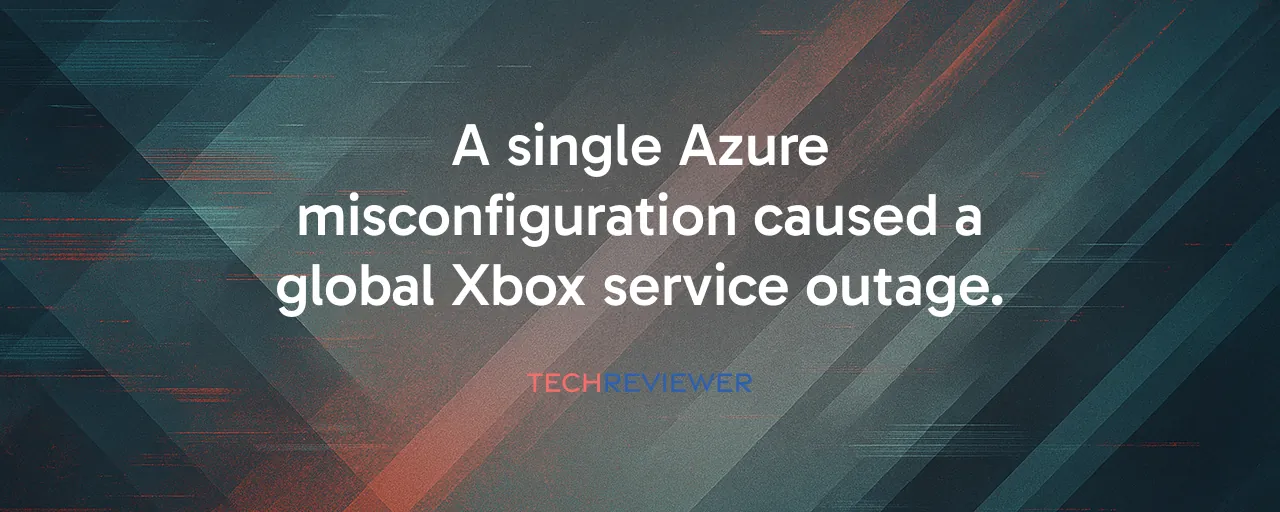Configuration Slip Shuts Down Xbox Services
A simple change in Microsoft Azure Front Door went wrong around 4 PM UTC on October 29, 2025. That mistake broke DNS resolution across the globe. Suddenly, Xbox Live stopped working for everyone. Players could not sign in, start multiplayer games, or pull titles from Game Pass. Even the support site went dark. Microsoft engineers spotted the problem fast. They paused all updates to the service, rolled back to the previous setup, and shifted traffic to backup paths. Recovery took hours as fixes spread through data centers in more than 60 countries.
The breakdown hit more than gaming. Microsoft 365 tools like Outlook and Teams faltered too. Minecraft servers refused logins. Some third-party sites built on Azure, including parts of Starbucks online ordering, showed errors. One internal tweak created chaos for millions of users at once.
Launch Timing Amplifies Player Frustration
Obsidian Entertainment picked that exact day to release The Outer Worlds 2 on Game Pass. Thousands of subscribers had cleared schedules to dive in right away. Instead, they stared at error screens. Without Xbox Live, the game refused to download or verify licenses. Developers at Obsidian tweeted apologies and pointed fingers at the Azure failure. Their big moment turned into a waiting game.
Game Pass holds between 35 and 37 million members. Most pay for the Ultimate tier. When the service drops, those monthly fees feel wasted. Players who own digital copies but lack home console status lose single-player access too. The outage exposed how much modern gaming leans on constant cloud checks.
AWS Outage Offers a Parallel Lesson
Nine days earlier, on October 20, 2025, Amazon Web Services suffered a similar collapse. Fortnite, Roblox, and Rocket League went offline for hours. That incident stemmed from a routing glitch in AWS edge networks. Epic Games and Psyonix scrambled with status updates while players vented on social platforms. Both cases show how one provider's stumble ripples across multiple titles and platforms.
Recovery differed in speed. AWS teams restored core functions in under four hours by isolating faulty regions. Microsoft needed longer because Azure Front Door sits deeper in the stack. The AWS event cost developers real-time revenue from in-game purchases. Xbox missed marketplace sales too. Each outage pushes studios to keep offline fallbacks ready, even for live-service games.
Pattern of Cloud Hiccups Raises Eyebrows
Microsoft faced other disruptions in 2025. A July incident kept Outlook down for 19 hours. June brought Teams and Exchange troubles from bad routing rules. Another Azure Front Door failure on October 9 affected nearly half of customers. These repeat problems point to shared components in the architecture.
Azure promises 99.995 percent monthly uptime across services. That sounds solid until a single change knocks everything over. Older data from 2021 counted 63 Xbox Live outages in the US over a year. Frequency has dropped, but impact grows with more users online. PlayStation Network logged fewer blips in the same period, though no platform stays perfect.
Cloud Advantages Come With Trade-Offs
Centralized servers make cross-play smooth and updates instant. Anti-cheat runs on powerful cloud machines. Subscriptions like Game Pass deliver hundreds of games without huge downloads. Yet every feature ties back to internet stability. A DNS failure turns healthy servers invisible.
Developers gain unified tools for licensing and analytics. Players enjoy seamless saves across console and PC. Still, outages remind everyone that geographic spread does not equal bulletproof design. Multi-region setups help, but configuration errors travel fast.
Steps Ahead for Stable Gaming Networks
Microsoft will likely tighten change controls after their review. Automated checks could catch risky updates before deployment. Separate status pages outside the main infrastructure would keep users informed. Some studios already build lighter offline modes into single-player titles.
Competition watches closely. Sony and Nintendo highlight their own records when rivals slip. Players push for clearer terms on digital ownership. Regulators in Europe discuss rules for service guarantees. The industry keeps moving toward cloud everything, but each breakdown sparks fresh talks about balance.
